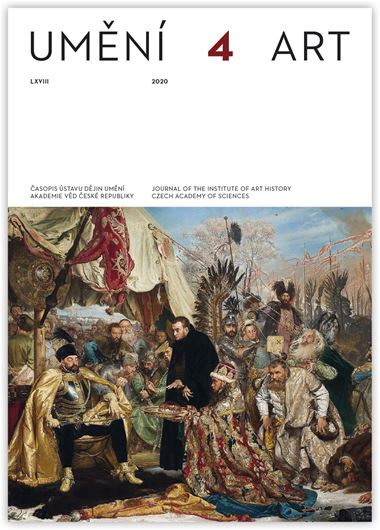Jana Zapletalová
Newly Discovered Drawings by Architect Filiberto Lucchese
Three drawings have recently been found in a vicarage in Melide (Switzerland) on the shore of Lake Lugano, in an archive together with many miscellaneous and qualitatively diverse drawings and prints. We propose that these three drawings should be attributed to Filiberto Lucchese (Melide 1606 — Vienna 1666), a key figure in architecture in Central Europe around the mid-17th century. The first drawing, which an architect created in free hand without preliminary under-drawing underneath or outlining, show a longitudinal cross- section through a covered hall two storeys high with twelve window openings set one above another on six axes. The drawing is a design for the stucco decoration of the hall, in which we can observe a variability of the decoration of the window jambs and suprafenestras above the first row of windows, with the deployment of a range of different architectonic and vegetative elements, busts, cartouches with curling stucco decor or just simple geometric framing. This variety in the approach to the treatment of decoration on a single wall adds dynamics and rhythm to this spontaneous and high-quality drawing, but also indicates that it was not a definitive design intended for stucco masters to realise. It was probably meant by the architect either just for himself, as a way of clarifying the most suitable system of decor, or as a basis for discussion with the commissioner on which decorative system to choose. By contrast the second and third drawings, which show stucco decoration for the vault of one salon and detail for the realisation of stucco in another different room, are made with great precision and must have served as definitive models for stucco artists. A family emblem in the form of a watermark on the paper of the third drawing has enabled us to identify the commissioner as Karl Eusebius Prince of Liechtenstein (1611–1684). This finding then led to the hypothesis that at the least the first drawing was a design for the interior of the main hall of the Liechtenstein Chateau in Úsov, but we do not know whether Lucchese and his colleagues ever actually realised the decoration of the interiors of the Úsov Chateau. The text offers a stylistic comparison of the drawings from Melide with the decorative systems of other buildings realised by Filiberto Lucchese and his team, specifically the chateau in Červený Kameň and in Holešov.
Full-text in the Digital Library of the Czech Academy of Sciences:
https://kramerius.lib.cas.cz/uuid/uuid:d8e705a9-2dce-4062-b8ae-9f7f4f692c99
< back

